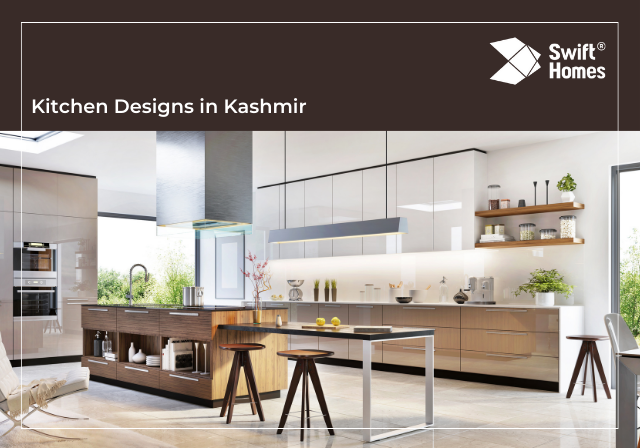
Nestled amidst the breathtaking Himalayan landscapes, the enchanting region of Kashmir is not only renowned for its stunning natural beauty but also for its rich cultural heritage, which extends to every aspect of life, including architecture and interior design. The traditional kitchens of Kashmir hold a treasure trove of age-old recipes, cooking techniques, and cultural practices that have been passed down through generations, reflecting the deep-rooted traditions and influences of the land. These kitchens served as a portal to understanding the history, culture, and lifestyle of the Kashmiri people, offering a fascinating glimpse into their way of life.
The traditional kitchen designs in Kashmir draw from a centuries-old history that showcases the amalgamation of various cultures and influences. The valley’s strategic location on the ancient Silk Road facilitated the exchange of ideas, resulting in a unique blend of Persian, Central Asian, and Indian architectural elements. This historical context deeply influenced the aesthetics and functionality of Kashmiri kitchen designs.
One of the most captivating examples of Kashmir’s cultural legacy is the traditional kitchen design. Rooted in history, culture, and practicality, these kitchens reflected the lifestyle, climatic conditions, and culinary preferences of the region. Traditional kitchens in Kashmir hold a special place in the hearts of the local community. They were not just spaces for cooking but also served as gathering points for family members and friends. The kitchen is where stories are shared, traditions are passed down, and cultural rituals take place. The warm ambiance and the aroma of cooking evoke a sense of comfort and nostalgia.
The traditional kitchens of Kashmir used to feature elongated clay ovens called “Dhaan.” These ovens had two to four openings on the top, where cooking pots were placed. Additionally, they had one or two openings at the front, through which firewood was inserted for fueling the fire. This cooking technique was widely prevalent in the majority of households at that time.
While modernization affected many aspects of Kashmiri society, the traditional kitchen layouts have remained resilient. These designs have adapted to contemporary needs while retaining their fundamental essence. Slowly but steadily, modern appliances like gas cooktops were incorporated into traditional kitchens, supplanting the traditional clay ovens.
The adoption of gas cooktops necessitated a departure from the customary practice of cooking while seated, requiring the creation of a functional space to house the cooktop along with provisions for other ingredients and spices. Consequently, this era marked a shift from seated cooking to a standing approach within the kitchen. Changing lifestyles, urbanization, and the integration of modern appliances have posed challenges to the traditional kitchen designs in Kashmir.
The architectural evolution of Kashmiri kitchens in the 20th century has been remarkable. Contemporary designs strive to turn the kitchen into an enjoyable space rather than a mundane one. These modern kitchen designs incorporate a range of accessories that facilitate effortless kitchen work, enhancing the overall kitchen experience.
In the present day, a variety of modular kitchen designs are emerging that combine aesthetics with ergonomic functionality. These kitchen designs feature functional organizers for every kitchen accessory, ensuring convenient access and impeccable organization.
These kitchen designs are characterized by their modular units, where various elements are pre-fabricated off-site and assembled on location. This departure from conventional designs signifies a shift towards efficiency, organization, and aesthetic appeal.
The designs are customized to maximize the utility of available space, catering to the unique needs and preferences of the homeowners. These kitchens incorporate sleek cabinetry, intelligent storage solutions, and efficient layouts that optimize every inch of the available area. Countertops, storage units and cooking areas seamlessly integrate with modern appliances, creating a functional yet visually pleasing environment.
The modular concept of these kitchens brings an added advantage of flexibility. Homeowners can choose from a variety of modular units and configurations to suit their specific requirements. From pull-out shelves and specialized drawers for utensils to designated compartments for spices and condiments, every aspect is meticulously planned to enhance convenience and organization.
The introduction of modular kitchen designs in Kashmir has had a profound impact on lifestyle. These designs have transformed kitchens from mere cooking spaces to hubs of creativity and functionality. The integration of modern appliances, such as dishwashers, chimneys, and built-in ovens, has streamlined tasks and reduced manual effort. The ergonomic layouts encourage efficiency, allowing homemakers to navigate the kitchen with ease and enthusiasm.
Let’s acquaint you with some of the common types of modular kitchen designs in Kashmir
Straight Kitchen: This is the most basic and space-efficient layout, where all the kitchen components are aligned along a single wall. It’s suitable for small or narrow spaces.
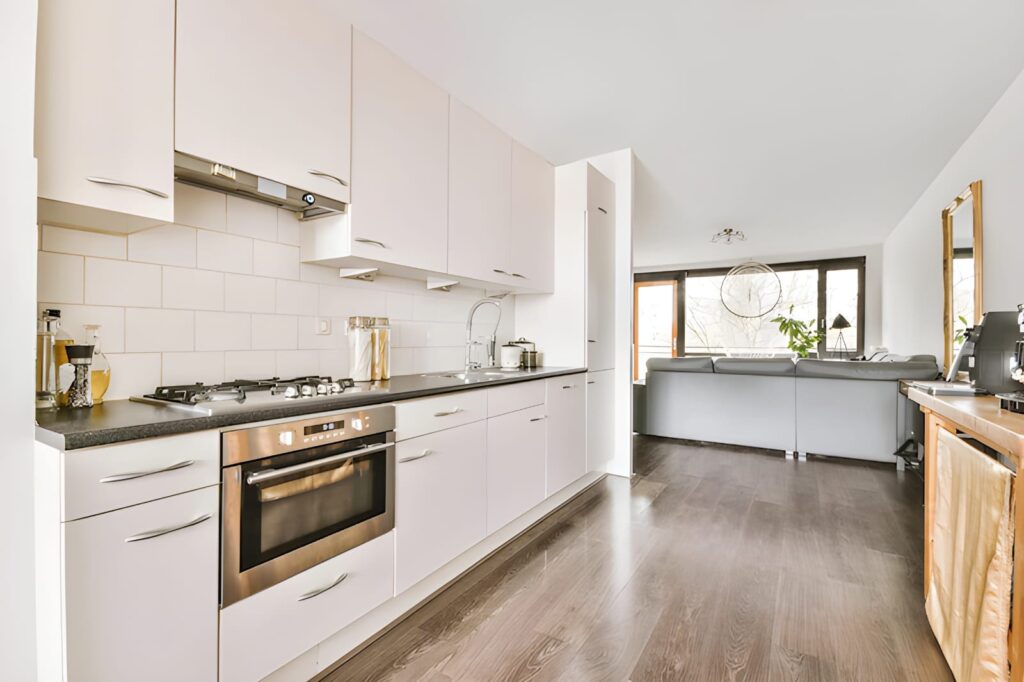
L-Shaped Kitchen: This design forms an “L” shape by arranging cabinets and appliances along two adjacent walls. It provides more counter space and is versatile for both small and medium-sized kitchens.
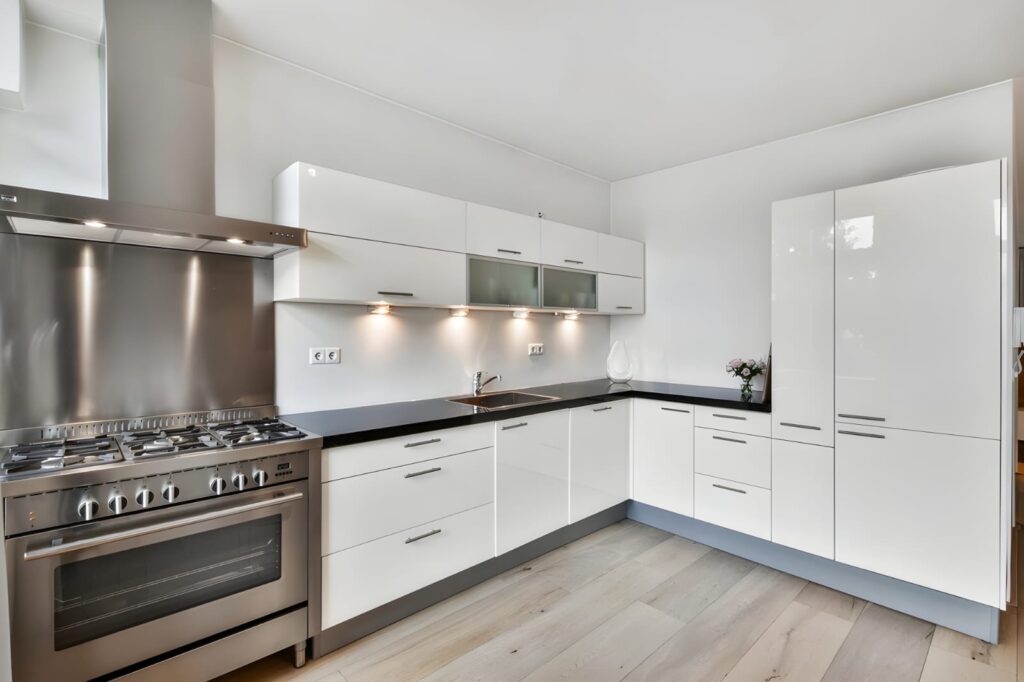
U-shaped kitchen: In this layout, cabinets and appliances are placed along three walls, forming a “U” shape. It offers ample storage and counter space, making it suitable for larger kitchens.

Island Kitchen: An island is placed in the center of the kitchen, often combining additional storage, workspace, and sometimes seating. It works well in open-plan spaces and larger kitchens.
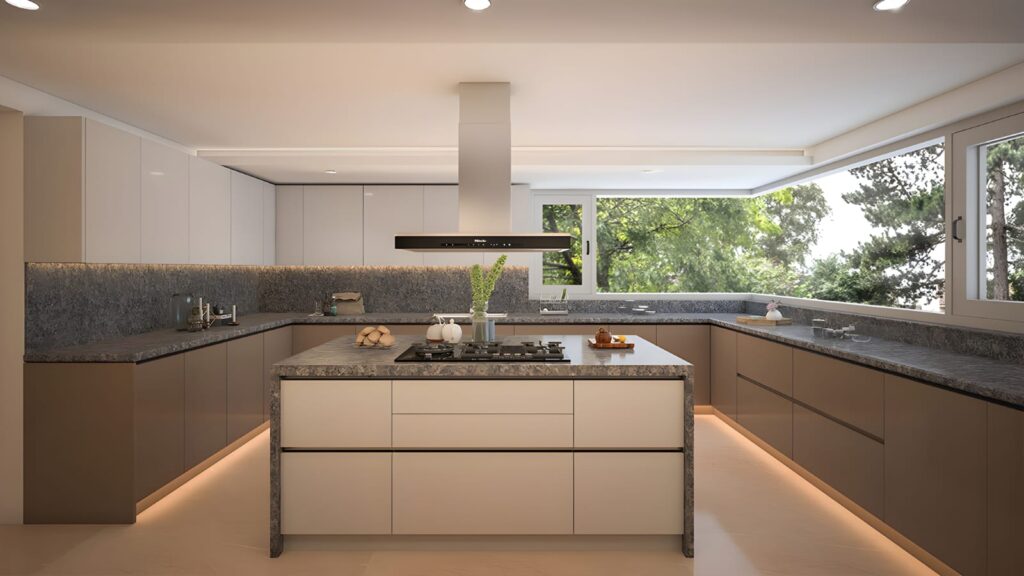
Parallel: In this design, two parallel countertops and workspaces are created along opposite walls, often with a walkway in between. It’s efficient for maximizing space and workflow.
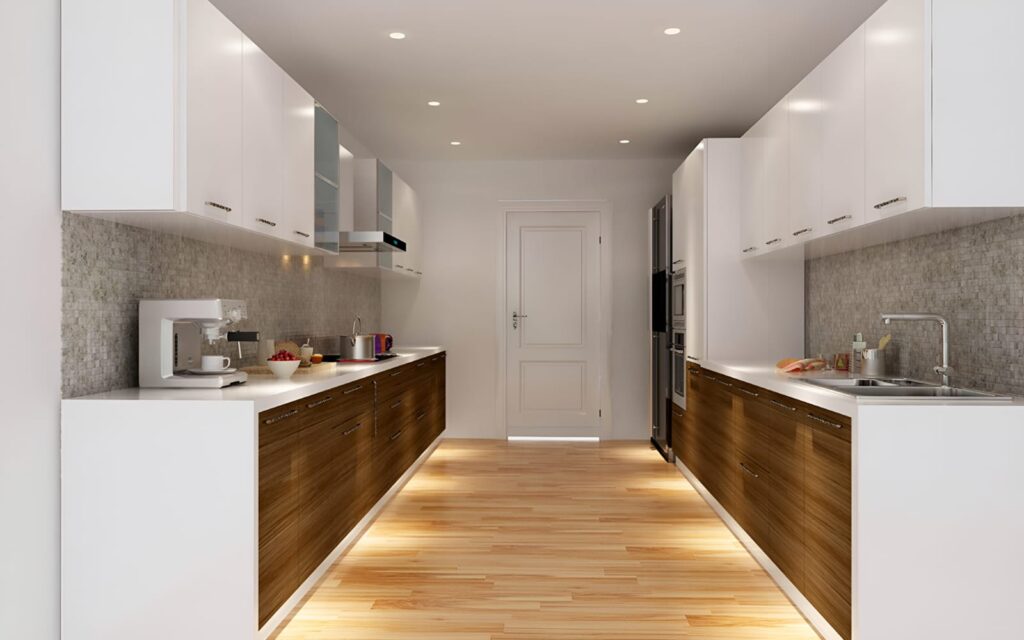
The modular kitchen designs have ushered in a new era of kitchen architecture in Kashmir. The blend of aesthetics and functionality in these designs has not only transformed the way kitchens are perceived but has also redefined the cooking and dining experience for residents. As the valley continues to embrace modernization, modular kitchen designs stand as a testament to the perfect harmony between tradition and innovation, ensuring that the heart of every Kashmiri home continues to beat with warmth, creativity, and efficiency.
However, there is a growing appreciation for heritage preservation, leading to efforts to integrate traditional design elements into modern kitchens. Architects and designers are finding ways to balance the charm of the past with the convenience of the present.
The traditional kitchen designs in Kashmir are a testament to the region’s rich cultural heritage and artistic craftsmanship. These kitchens encapsulate the essence of Kashmiri life, where warmth, hospitality and culinary traditions are deeply cherished. While modernization and urbanization present challenges to the preservation of these designs, the efforts to blend traditional aesthetics with contemporary functionality ensure that the legacy of Kashmir’s traditional kitchens continues to thrive, captivating the hearts of generations to come.
Swift Homes is a trusted name with decades of expertise in crafting impeccable modular kitchen designs. Our expert professionals combine creativity, functionality, and attention to detail, ensuring your kitchen reflects your style while optimizing efficiency. With our extensive experience, you can trust us to transform your vision into a masterpiece that stands the test of time.
If you have any inquiries about security solutions, please reach out to us via our toll-free number or social media handles. You can also visit any of our three home decor studios in South Kashmir located in Nai-Basti Anantnag, Iqbalabad in Anantnag, and in the main town of Shopian. We look forward to helping you design the best kitchen designs for your home.